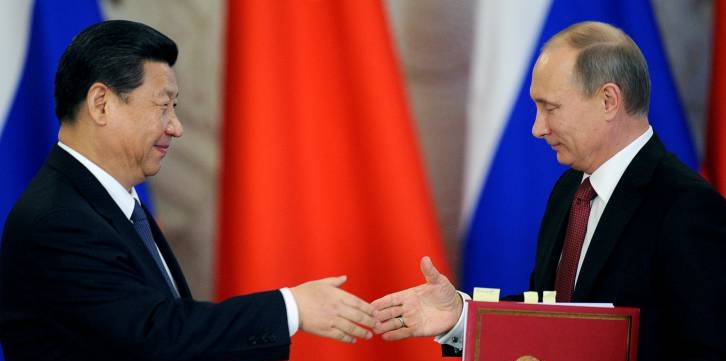Russia plans to boost trade with China
September 29, 2018 | Expert Insights

Moscow is aiming to increase the bilateral trade volume to $200 billion in the next five years.
Background
China and Russia have had a somewhat tumultuous past. From former allies to bitter rivals throughout the 1960s and 1970s despite both being led by communist governments and finally back to being allies again in the 1990s. Both nations, despite not having a great deal in common culturally, find themselves politically in agreement on a large number of key issues on the global stage, often offering a viewpoint that is opposed to those offered by their American or European contemporaries.
While there is a great deal of political goodwill between the two nations, that has not yet translated into strong economic ties, with Russia only accounting for around 1.8% of China’s global exports and Russian goods, primarily energy, making up only 2% of China’s imports from Russia. However, with Russia’s participation in the One Belt, One Road mega-project that is being spearheaded by China, there is a chance that the warm political relations between the two may soon be backed up by a vastly increased amount of bilateral trade.
China and Russia are already coordinating on many aspects of foreign policy, such as supporting the Assad regime in Syria, criticizing the handling of the Korean Peninsula crisis by the United States and, most recently, the US decision to recognize Jerusalem as the capital of Israel. As both are permanent members of the United Nations Security Council, combined they have a great deal of power when it comes to organizing or preventing any action by the international community.
Analysis
Trade turnover between Russia and China has been rapidly growing and is expected to reach $100 billion this year, according to the Russian President Vladimir Putin. Moscow seeks to double the figure in the next six years. “It is planned to increase Russia’s trade with China to $200 billion and Chinese investment in the Russian economy to $15 billion,” said a document for the government’s activities for the period up to 2024.
The document, released on Thursday, also envisages boosting trade with other countries. Russia’s trade with India may reach $30 billion by 2024. Trade with the Middle East and North African nations is expected to amount to $50 billion, while trade with sub-Saharan countries could hit $7 billion, and Latin America, $20 billion.
China is Russia’s largest trading partner, accounting for 15% of Russian international trade in 2017. Bilateral trade between the two countries grew by 31.5%, reaching $87 billion last year. They are also promoting settlements in ruble and yuan, bypassing the US dollar and other Western currencies.
In 2017, 9% of payments for supplies from Russia to China were made in rubles; Russian companies paid 15% of Chinese imports in renminbi (yuan). Russia has already become China’s top supplier of natural gas, and their increasing trade volumes is complemented by their deepening strategic partnership.
Just three years ago, the numbers were two and nine percent, respectively. The two nations have also established a Russian-Chinese investment fund worth 68 billion yuan (almost $10 billion) to develop trade, economic investment, and scientific cooperation.
Counterpoint
The biggest hurdle for the new trade expansion is the increasing US sanctions on Moscow. Russia cannot expand its trade volume with China if Washington continues to impose economic sanctions on key Russian exports such as natural gas and consumer goods. The very basis of bilateral trade between China and Russia is based on natural gas and consumer goods.
Assessment
Our assessment is that if Sino-Russian ties continue to improve, both politically and economically, it could result in the formation of a new and powerful alliance that could economically, politically and even militarily contend with the U.S. or European Union. With current U.S. leadership expressing a commitment to adopting a more isolationist and non-interventionist stance with regards to its foreign policy, a close strategic partnership between Russia and China could, quite conceivably, emerge as a new leading global power on the world stage within the next two decades.








Comments